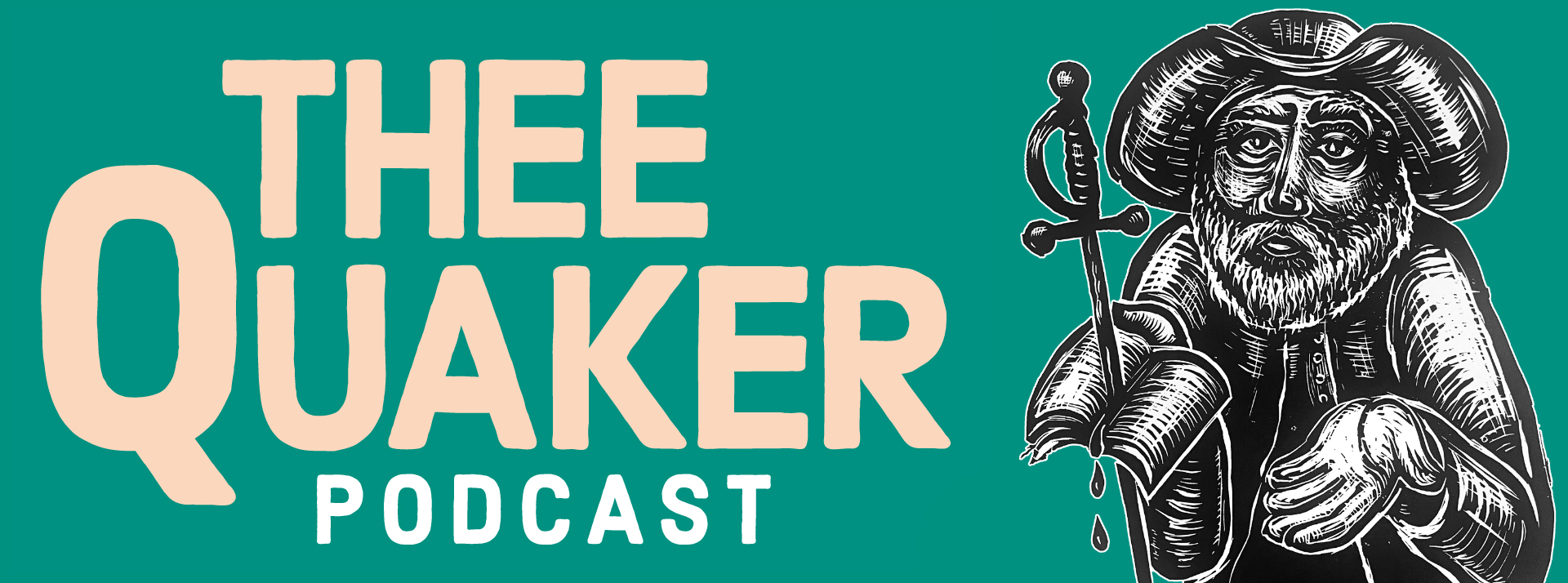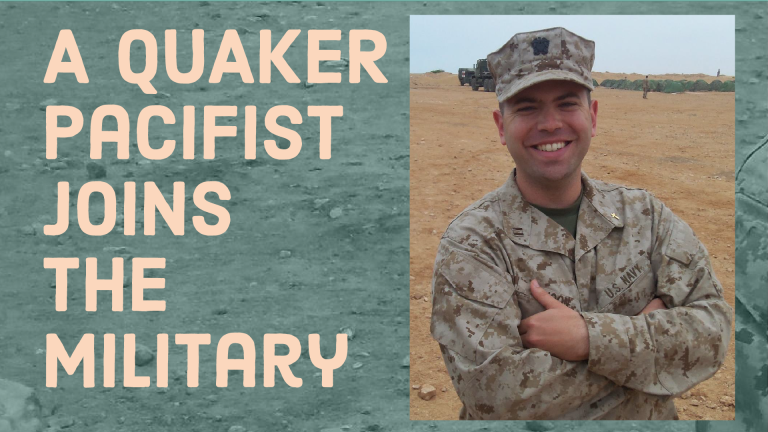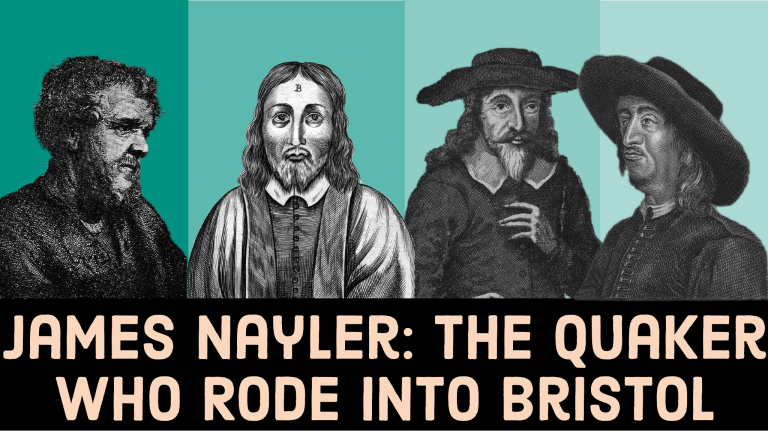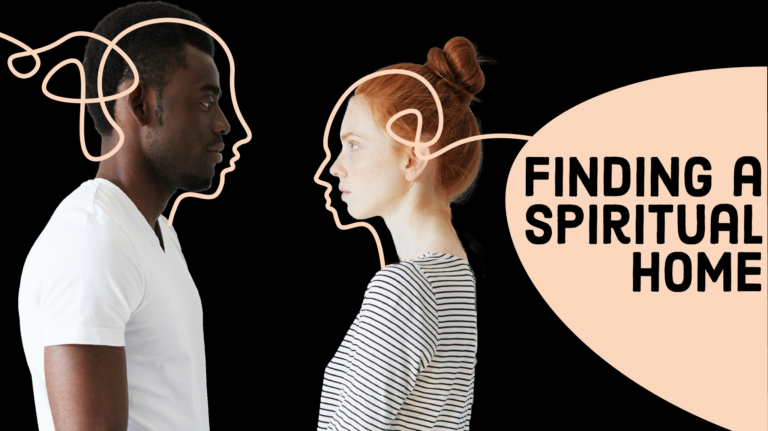The Quaker Prison Experiment
The Quaker experiment at Eastern State Penitentiary was meant to be a sanctuary for the soul, a place to reform criminals through silence and reflection. Instead, it accidentally engineered a form of psychological torture: solitary confinement . This episode uncovers the complicated history of this “Great Experiment” and then journeys to the offices of AFSC Prison Watch, where a new generation of Quaker activists are confronting this legacy by listening to the raw, firsthand accounts of people who have survived the modern system.
Subscribe so you don’t miss an episode!
Leave a comment below to share your stories and thoughts!
Westtown School, a leading Quaker day school for Pre-K to 12th grade is hosting Open Houses this Fall.
Upper School, Saturday, October 25th, 9:30 to 11:30 a.m.
Middle School, Thursday, October 30th, 9:00 to 11:30 a.m.
Lower School, Wednesday, November 5th, 9:30 to 11:30 a.m.
Learn more at www.westtown.edu/fall.
Discussion Question
- The first half of the episode details the failure of forced solitude, while the second half focuses on the work of AFSC Prison Watch, which is built on listening and community. Why is community so essential for rehabilitation and so devastating when it’s absent?
- The episode ends with Bonnie’s assertion that the makeup of a prison “says more about society than it does about those people.” What do you think the current prison system says about our society’s values?
- The 18th-century reformer Elizabeth Fry is quoted as saying, “When thee builds a prison, thee had better build with the thought ever in thy mind that thee and thy children may occupy the cells”. How would our criminal justice system be different if this principle was followed today?
Zack Jackson
I’m standing in the middle of Philadelphia, like a mile from City Hall. This is the sixth largest city in the country, a modern metropolis, and yet I am looking at an honest to god medieval castle. There’s 30 foot stone walls the length of a city block, guard towers with those narrow archer windows for some reason. It is a fortress out of time and a monument to our good intentions. This is Eastern State Penitentiary. It was designed to be intimidating, a deterrent to would-be criminals. But the story of this place, and the reason why I’m here, is about what was supposed to happen on the inside. It was an experiment conceived in large part by Quakers to re-engineer the human soul.
Zack Jackson
To appreciate just how revolutionary this place was, you need to understand the sheer horror that it was designed to replace. The prisons of the early 1800s were pits of filth and violence, crowded containment units rife with assault and abuse, it was a system of pure punishment. As Bug Finegar, a senior educator at Eastern State Penitentiary and lifelong Quaker, explains,
Bug Finegar
People would be held in a locked room until their punishments, which were usually fines, often corporal punishments, like physical beatings, floggings and then the Quakers main issue capital punishment used for things that are crimes nowadays, like theft, but we wouldn’t really use the death penalty for of course.
Zack Jackson
If you’ve been listening to this season, you know that Quakers were no strangers to prison, and so it’s not surprising that they were some of the most vocal advocates for prison reform. As 18th century prison reformer Elizabeth Fry said, “When thee builds a prison, thee had better build with the thought ever in thy mind that thee and thy children may occupy the cells”.
So in response to the dehumanizing abuses of Pennsylvania prisons, a group called The Pennsylvania Society for Alleviating the Miseries of Public Prisons was formed. While its members included prominent figures like Benjamin Franklin and Dr. Benjamin Rush, its driving energy came from influential Quakers like Caleb Lownes and Roberts Vaux. They proposed a new system grounded in the core Quaker belief that there is that of God in everyone, and that the divine within them can rehabilitate even the most hardened criminal. But how to create a space for that rehabilitation was a subject of intense debate, and their chosen solution came from a radical and hotly contested interpretation of Quaker-inspired beliefs.
Bug Finegar
And the core concept is solitary confinement, people in their own spaces, in complete silence, meditating, praying, worshiping, listening to the inner light and trying to rehabilitate themselves. Jon Haviland, the architect who designs this place, wants the outside to look like a castle. Wants it to look intimidating, like a place you don’t want to be, maybe a deterrent to crime. And then the inside uses the same architectural style, but it’s designed more like a church. And when I say that on tours, often the question I get from guests is, well, why is it so plain and bare and simple of a church, like, why is it not very ornate? And the answer is, well, it’s designed after a Quaker meeting. It’s supposed to look vaguely religious, but not necessarily the fanciest place in the world.
Zack Jackson
I’m walking into one of those cells now, and you can feel the intention. The doorway is small, so you need to bow your head to enter, but then, once you’re inside the cell, your eyes are drawn upward to the high stone vaulted ceilings, and the only light in this is a soft, hazy glow from a single translucent skylight far above. It was meant to be a tiny sanctuary, a place where, stripped of all worldly distractions, a person could finally find that of God within themselves. This place is a museum now, and there are visitors walking up and down the halls as I speak, but I can barely hear a thing, even the sound of my breath, is absorbed by these stone walls. This is not a space built for punishment. This. This is a sanctuary to silence, an incredibly intentional space, one that I suppose could either inspire enlightenment or madness, depending on the person…
Zack Jackson
When the prison opened in 1829, inmates were kept, for the most part in total, silent isolation. If they were ever moved from the cell, the guards would put a hood over their head so they wouldn’t accidentally see another inmate. The lonely silence was enforced in ways that are just hard to imagine today.
Bug Finegar
People would be in an individual singular cell. They would be in one space for 23 hours a day, and there would be two half an hour blocks at different times as their neighbors in a solitary exercise yard behind their cell, guards would walk up and down the hallways of the cell blocks that are dampening their feet so that you couldn’t really see when people were here, when people were coming. That was part of the idea of the silence of the building. People would be punished by eating bread and water only for a week if they made too much noise, right? But it wasn’t a Quaker idea. Elizabeth Fry didn’t say that. Thomas Scattergood didn’t say that. It wasn’t part of the founding documents of the building.
Zack Jackson
And this points to the central paradox of the entire experiment. The Reformers took the Quaker experience of finding spiritual connection in silence and tried to replicate it in prison, but they missed one crucial element, community.
Bug Finegar
But one of the issues I’ll point out is that Elizabeth Fry actually brings up in Eastern State’s development. Quaker meetings were always talked about as having to have more than one person, two people, in the same space, and silence, of course. But you know, Quakers are very well known for some silence, but a lot of loudness as well, and other times. And so there’s some issues of the system. It’s not, it’s not, clearly the Quaker way,
Zack Jackson
The solitary cells were designed to be sanctuaries for inner transformation, but by mistaking the form of silence for the function of communal worship, the Reformers accidentally created spaces of profound psychological torture, and this philosophical error was compounded by the messy realities of running a prison in a growing city.
Bug Finegar
The intention was that people incarcerated at Eastern State would be visited by different staff members throughout the day, many different staff members throughout every day, whether that be guards bringing them food to their solitary selves, moral instructors. There’s actually, I mean, the intention was that the one Warden, the person running the prison, 500 people incarcerated at Eastern State when we first opened up and the warden was supposed to be visiting every single one of those people. Of course, like you see, some issues logistically popping up immediately. If you can, you can’t pay enough staff members. They don’t have the money to have a big enough staff. The wardens were often in trouble for a lot of different, you know, controversies around corruption, embezzlement. So a lot of the times at Eastern State, especially after the first decade, this wasn’t actually happening. People would get food, but physicians wouldn’t visit, moral instructors wouldn’t visit, volunteers often were supposed to be Quakers wouldn’t visit. And isolation starts to become more and more what we look at. You know, solitary confinement nowadays, people actually didn’t see each other throughout the days.
Zack Jackson
All that was left was the isolation and the punishment, the penitence in the penitentiary was gone.
Bug Finegar
And they see the issues with it back in the day, actually, really, I mean, there’s a lot of Quaker criticism the moment Eastern State opens up about this complete solitary confinement. There was a debate about how much solitary throughout the day might be the most helpful to people incarcerated. And they talk about, I mean, they use more outdated language. They say, drives people insane, right? But they also say that the benefits of this penitence penitentiary system would eventually outweigh the negatives. And of course, in actuality, you know what? What actually happens in the building is a big different story.
Zack Jackson
The experiment failed. After about a decade or two, Quaker influence was greatly diminished, and Eastern State abandoned much of its spiritual idealism. By the 1920’s overcrowding led them to abandon the solitary cells, and in 1971, they ceased operation altogether. These days, Eastern State is focused on taking those lessons from the past and advocating for a more just future for all incarcerated people. I asked Bug about the different prison models being used in the world and what the best system might be. They resisted my simplistic question. There is no single best way to do this. That sort of mindset that got us into this mess. For Bug, it goes back to their Quaker ideals, honoring the lived experience of each individual soul.
Bug Finegar
For hundreds of years in this city in this country, activists who see the problems with prisons have seen the issues that arise when prisons focus primarily on punishment and primarily on deterrence, and if you implement policies to fix that system, without the work and collaboration and conversation with people who are impacted by that system, the policies that you introduce, despite the intentions behind them, might be incredibly harmful, and so centering the voices of people who are impacted by the justice system, impacted by the system that we’re trying to fix, is going to be the number one way to introduce policies that are actually going to help people.
Zack Jackson
Bug’s answer, as true as it feels, raises its own profound questions. What does that actually look like in practice? How do you center a voice when it’s been intentionally silenced, locked behind walls designed to make it disappear, and how do we build a system that truly honors the individual story, the lived experience, while also seeking justice for victims and safety for the wider community? These are the sorts of questions that Quakers have been wrestling with since the very beginning. So to learn how some Quakers are trying to answer them today, I traveled two hours north to Newark, New Jersey, to meet a group of people who have been doing this work for decades on both sides of the bars. That story after the break.
Zack Jackson
Before the break, we heard the story of Eastern State Penitentiary and how, despite their best intentions, Quaker reformers accidentally created a prison system that, instead of liberating the souls of its inmates, crushed them. I wanted to find out how Quakers had learned from the past and how they were engaged in this work today, so I drove north to Newark, New Jersey, to the office of the American Friends Service Committee Prison Watch. Their program is called Prison Watch for a reason. They are keeping watch over a system designed to be opaque, a world behind walls that so few of us ever get to see. There, I met Ojore Lutalo, one of their most committed volunteers. Ojore was held in solitary confinement for 22 years, and his experience shows what became of the idea of isolation. The goal was no longer rehabilitation. It was to break him.
Zack Jackson
Tell me about what the cell is like in a solitary refinement.
Ojore Lutalo
Here, look, the cells are five by seven. That’s the mattress. Got a bucket, a bucket of water? Got a cheap shelf for TV if you can afford one, you got a bookshelf, if you have any books, right, and puts the light still on 24 hours a day.
Zack Jackson
The lights in the cell are on 24 hours
Ojore Lutalo
during the camera watch and air conditioning, blow cold air, cool air, cool air, cold cold air, and then you have your prisoners screaming out,
Zack Jackson
that’s torture.
Ojore Lutalo
Yes, torture
Zack Jackson
and that’s legal.
Ojore Lutalo
It’s no touch torture.
Zack Jackson
No touch torture. It’s a term for methods designed to break a person psychologically without leaving physical marks. It’s the constant light to induce sleep deprivation, the endless cold air to wear down the body. It’s what Charles Dickens, who visited Eastern State a century and a half earlier, called a “slow and daily tempering with the mysteries of the brain”. And it’s the perfect tool for a system that isn’t trying to punish a crime, but to crush a person’s spirit, which is why Ojore Lutalo was there in the first place. He was placed in these conditions, not for a violent act, but because he was a member of the radical Black Liberation Army, and prison administrators didn’t want his revolutionary ideas to spread to other inmates.
Ojore Lutalo
I said, Look, I’m here. What I did? I done that. I got the time. You gave me the time. No problem. Let me be let me do my time. What you thinking? One time, I told him I haven’t done anything. Said you could if you wanted to. That’s a thought crime. Yeah? Think about that. Yeah.
Zack Jackson
So you served 22 years because of the crime you did, but you. Were tortured because of their thoughts.
Ojore Lutalo
Exactly, yeah, no, didn’t. Didn’t care about what I did. This kind of about my thoughts, and we pressed my thoughts on other people. That’s to tell people challenge authority, right?
Zack Jackson
That’s why, trapped in this system, his only hope was to get his story to the outside world. So in 1986 he began to write letters. And one of those letters found its way to Bonnie Kerness at AFSC in Newark,
Ojore Lutalo
February 4, 1986 they sent my, sent my letter to north, to Newark and Bonnie were working together ever since, right. I told Bonnie, if I survived this, I would be, I would be there to support you like you supporting me. She was there the whole time.
Zack Jackson
That letter and the promise that came with it became the catalyst for AFSC’s decades long fight against solitary confinement, a fight led by director Bonnie Kerness and grounded in a distinctly Quaker process. Here’s Bonnie
Bonnie Kerness
The Quaker thing is that of God and every human being, whether or not I believe in God, you know I believe, you know that there is a value in every one of those letters. Is a human being waiting to hear from us. It’s, it’s an approach. And the approach is that you know better than me. It’s an approach that listens and then says, What do you want me to do?
Zack Jackson
What do you want me to do? It’s the polar opposite of the philosophy that built Eastern State. It doesn’t start with a blueprint. It starts with a person. It’s a process of turning testimony into action. That action to them often takes the form of publications created with and for the people that they serve.
Bonnie Kerness
This is probably what we get the most requests for, I would say, close to what, 600 a year. What is it? It’s a survivor’s manual. How do you survive in solitary? It’s written by and for and it’s beautiful. Take it. That’s beautiful. This was what we publish. So this is what happens in the US criminal justice system. Backdrop against UN treaties. The United States has signed three UN treaties. One of them is the Convention Against Torture, so they have to submit a tome once every five years saying they don’t torture, and they do. And then people like us come along and say, you know, oh, oh yes you do. Oh yes you do. This is, you know, how come we get all these letters? You know, survivors speak, prisoner testimonies.
Zack Jackson
These are all reports. These are all reports to the torture in New Jersey,
Bonnie Kerness
to the United Nations and United States,
Zack Jackson
and they take these stories directly into the halls of power, building coalitions for real, systemic change. Bonnie says she trusts this process because these coalitions are built around a core principle that mirrors the entire philosophy of their work,
Bonnie Kerness
and then also trusting very much the whole process of coalition building, and those coalitions being replete with people with lived experience, they call themselves credible messengers, and they know what they’re talking about
Zack Jackson
After an eight year legal battle, that community led coalition work resulted in a landmark victory. In 2019 New Jersey passed the Isolation Confinement Restriction Act, one of the most comprehensive laws in the country, limiting the use of solitary confinement. But as Bonnie Kerness is quick to point out, passing a law and changing a system are two very different things.
Bonnie Kerness
Lo and behold, what happens to legislation that passes and nobody pays attention to it? You know, who’s minding the store? Where is the power? So the only prison in New Jersey that’s in compliance is the women’s prison, because it has a board of directors.
Zack Jackson
The power often remains with the prisons themselves, who find creative ways around the law by doing things like changing the name of a unit or ignoring the rules. So the work continues. The name of their program, Prison Watch, is not just a title, it’s a literal ongoing mission to hold the prison systems accountable, fueled by a constant stream of information from the inside
Bonnie Kerness
and and we get letters and calls all the time. You know that nobody the men, have not been allowed out of their cages at all period.
Zack Jackson
The story of Quaker engagement with prisons is a cautionary tale. It begins at Eastern State with an architectural blueprint for the soul, a grand theory carved into stone, designed to save people without ever asking what they needed. It was a project that started with an answer. Today, the work starts not with an answer, but with a question, not with a blueprint, but with a letter. It begins with the simple, revolutionary practice that Bonnie has dedicated her life to.
Bonnie Kerness
I don’t think we come in to reform, we come in to listen, and that listening has helped us form program and helped us move forward,
Zack Jackson
To come in to listen. It is a philosophy that shifts the focus from designing the perfect institution to connecting with the person right in front of you, and in so doing, it holds up a mirror, asking us to see what our systems of justice truly reflect about ourselves
Bonnie Kerness
Globally, everybody should look, you know, at the prisons in their community, the jails in their communities, and see what the conditions of confinement are and who is in them. You know that pamphlet I showed you our children’s house, does a 12 year old, you know, belong in solitary confinement? I had a nine year old tell me he was picked up and because he was wandering, white kids are allowed to wander all over the neighborhood, to look at racism, to look at who is in your prisons, and just by looking who’s in there, that says more about society than it does about those people.
Zack Jackson
Thank you for listening, and thank you to our guests, Bug Finegar, Ojore Lutalo, and Bonnie Kerness. For discussion questions and a transcript of today’s episode, make sure you check out Quakerpodcast.com and while you’re there, be sure to subscribe so you don’t miss a thing. This episode was hosted, produced and edited by me Zack Jackson, Jon Watts wrote and produced the music. Thee Quaker Podcast is a part of Thee Quaker Project. We are a nonprofit Quaker media organization dedicated to giving Quakerism a platform for the 21st Century. If you like what we’re up to, please consider becoming a monthly supporter. You can go to Quakerpodcast.com and click support in the top right window. Takes less than five minutes, and we really appreciate it. And now your daily Quaker message as read by Grace Gonglewski
Grace Gonglewski
Elizabeth Gray Vining, 1952 what we must do with God’s help is to accept sorrow as a friend, if possible, if not, as a companion with whom we will live for an indeterminate period, for whom we have to make room as one makes room for a guest in one’s house, a companion of whom we shall always be aware and from whom we can learn and whose strength will become our strength to. Together, we can create beauty from the ashes, and find ourselves in the process
Zack Jackson
To get Quaker wisdom in your inbox every day, go to dailyquaker.com that’s dailyquaker.com.
Hosted, produced, and edited by Zack Jackson.
Original music and sound design by Jon Watts (Listen to more of Jon’s music here.)
This season’s cover art is by Todd Drake
Supported by listeners like you (thank you!!)







